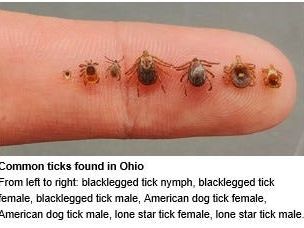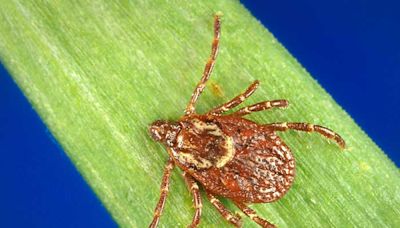Search results
People also ask
What does a tick bite look like?
What does a Rocky Mountain wood tick look like?
What are the symptoms of tickborne disease?
1 day ago · Colorado Tick Fever is a very rare virus spread by infected Rocky Mountain wood ticks. These ticks are found in low-growing vegetation across the western US and western Canada at elevations between 4,000 and 10,000 feet above sea level. In the US, wood ticks are found in Colorado, Wyoming, Montana, Utah, Idaho and parts of California ...
1 day ago · The Rocky Mountain wood tick is the vector of Colorado tick fever and symptoms usually develop between three and seven days after the tick bite. Rocky Mountain spotted fever (Rickettsia rickettsii ...
1 day ago · Ticks are small arachnids that attach themselves to the skin and feed on blood. They are often found in wooded or grassy areas and can transmit diseases such as Lyme disease and Rocky Mountain spotted fever. When a tick bites, it can inject saliva and other substances into the skin, which can cause irritation and inflammation.
6 days ago · Rocky Mountain spotted fever: It’s spread by several species of ticks, including the American dog tick, the brown dog tick and the Rocky Mountain wood tick. Symptoms include fever, rash and headache and can progress rapidly to a life-threatening illness if not treated quickly with the antibiotic doxycycline.
5 days ago · Anaplasmosis: Symptoms of this bacterial disease, spread by the blacklegged tick, typically begin one to two weeks after being bitten. They include fever, headache, chills, nausea, vomiting ...
5 days ago · Rocky Mountain spotted fever (RMSF) is a serious disease caused by Rickettsia rickettsii and should be treated immediately if suspected, due to its high mortality rate in the absence of appropriate medical intervention. Treatment should not be delayed for laboratory test results.
1 day ago · Plus, ticks can cause allergic reactions or a condition called tick paralysis (plus, tapeworms in dogs and cats). To help, understand how a tick bite differs from a typical bug bite: When a tick bites a host, the host’s body reacts to the proteins injected and produces a red, raised area that itches and may resemble a bull’s eye.



